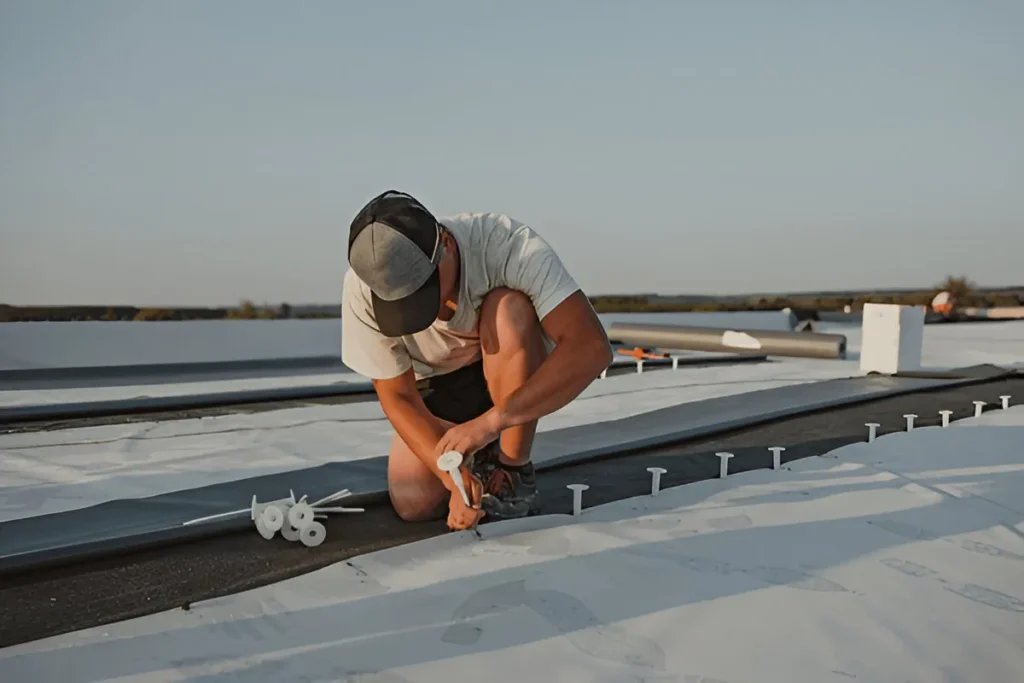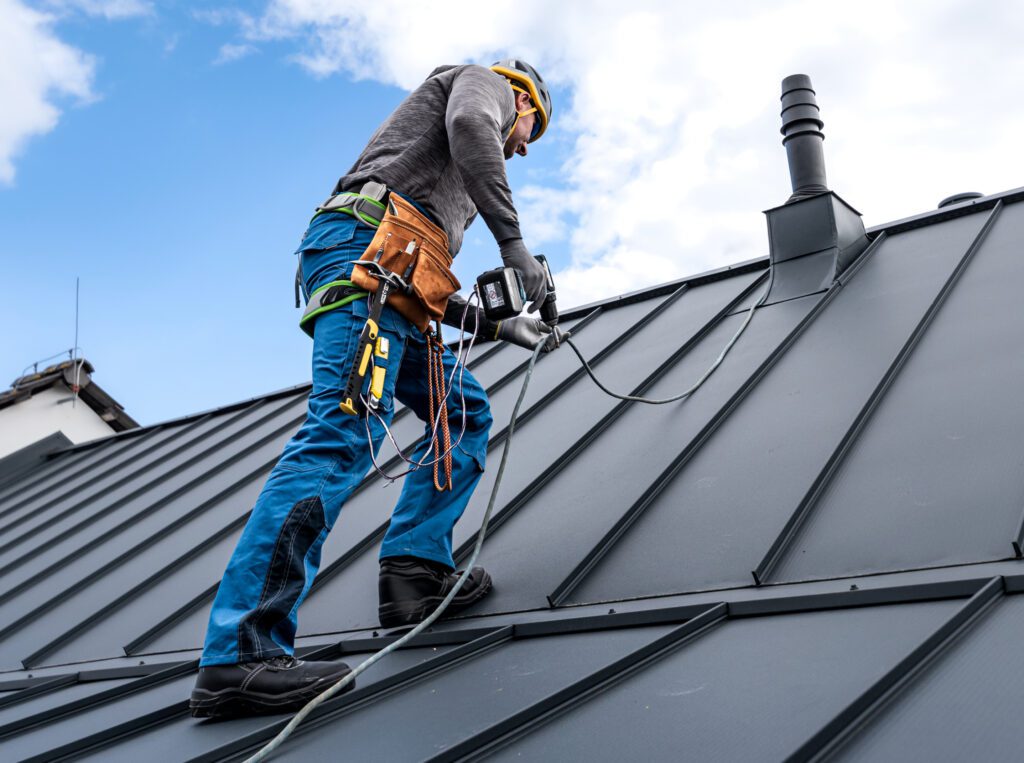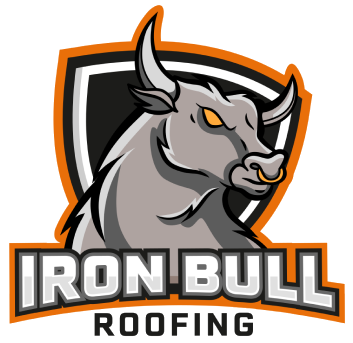Best Roofers Near Me
From Estimates to Completion: Your Guide to Hiring Best Roofers Near Me
Your roof is one of the most critical components of your home, acting as the first line of defense against the elements. Yet, it’s often overlooked until a problem, like a leak or visible damage, arises. When issues occur, the process of finding a reliable roofer can feel overwhelming. Navigating online searches, deciphering estimates, and choosing the right materials requires time and knowledge. Hiring a local expert who understands regional weather patterns and building codes is essential for ensuring a durable, high-quality result.
This guide will walk you through the entire process of hiring a best roofers near me, from the initial assessment to long-term maintenance. We’ll provide the information you need to identify roofing problems, find trustworthy professionals, understand contracts, and protect your investment for years to come. By the end, you’ll feel confident in your ability to make informed decisions and partner with a company that can get the job done right.
Assessing Your Roofing Needs
Before you can hire a roofer, you need a basic understanding of what’s wrong with your roof. While a professional inspection is always necessary for an accurate diagnosis, knowing the common signs of trouble can help you determine the urgency of your situation.
Identifying Common Roofing Problems
Most roofing issues are easy to spot if you know what to look for. It’s a good practice to visually inspect your roof from the ground periodically, especially after severe weather events. Here are some common problems to watch out for:
- Missing or Damaged Shingles: High winds and hail can lift, crack, or completely remove shingles, leaving the underlying structure exposed to moisture. Look for shingles that are curled, buckled, or have missing granules.
- Leaks and Water Stains: The most obvious sign of a roofing problem is water inside your home. Check your attic for damp rafters or insulation. On your ceilings, look for dark stains, peeling paint, or discoloration, which often indicate a slow leak.
- Clogged Gutters: Gutters filled with shingle granules are a red flag. Asphalt shingles shed their protective granules as they age and near the end of their lifespan. An excessive amount in your gutters suggests your roof is deteriorating.
- Sagging Roof Deck: A sagging or drooping roof is a serious structural issue that requires immediate attention. It could be a sign of water damage to the underlying decking or, in severe cases, a problem with your home’s foundation.
- Flashing Damage: Flashing is the thin metal material installed around chimneys, vents, and skylights to prevent water from seeping into joints. If it’s rusted, cracked, or pulled away, it creates an easy entry point for moisture.

Professional Roofing Service Provider
When to Repair vs. Replace
Once you’ve identified a problem, the next question is whether you need a simple repair or a full replacement. The answer depends on several factors, including the age of your roof, the extent of the damage, and your budget.
- Choose Repair For: Minor, localized issues are often good candidates for repair. If you have a few missing shingles from a recent storm or a small leak around a vent, a targeted fix can be a cost-effective solution. Repairs are most suitable for newer roofs that are otherwise in good condition. A professional can replace damaged sections and ensure the rest of your roof remains sound.
- Choose Replacement For: If your roof is approaching the end of its expected lifespan (typically 20-25 years for asphalt shingles) or shows widespread damage, a replacement is usually the smarter long-term investment. While patching multiple problem areas might seem cheaper upfront, it can lead to a cycle of costly repairs. Widespread granule loss, extensive leaks, or significant sagging are all signs that a full replacement is necessary.
Finding Reputable Local Roofers
The quality of your roofing project depends heavily on the contractor you choose. A reputable local roofer will not only provide excellent workmanship but also offer peace of mind through proper licensing, insurance, and a solid track record.
Online Research and Reviews
Your search for a roofer will likely begin online. Start by searching for “local roofers near me” and browse the websites of the top results. A professional, informative website is a good initial sign. Look for a physical address and local phone number, which help confirm they are a legitimate local business.
Next, dive into customer reviews on platforms like Google, Yelp, and the Better Business Bureau (BBB). Don’t just look at the star ratings; read through the comments to understand the experiences of past clients. Pay attention to how the company responds to both positive and negative feedback. A contractor who addresses complaints professionally shows they value customer satisfaction.
Checking Credentials and Insurance
Once you have a shortlist of potential roofers, it’s time to verify their credentials. This is a non-negotiable step to protect yourself from unqualified or fraudulent contractors. Ask for the following:
- License and Registration: Most states require roofing contractors to be licensed. This proves they have met the minimum requirements for knowledge and experience. You can typically verify a license number on your state’s contractor licensing board website.
- General Liability Insurance: This insurance covers any damage that the roofer might cause to your property during the project. For example, if a tool is dropped and breaks a window, their liability insurance would cover the replacement cost.
- Worker’s Compensation Insurance: This is crucial. Worker’s compensation protects you from liability if a roofer is injured while working on your property. Without it, you could be held financially responsible for their medical bills and lost wages.
Ask for copies of their insurance certificates and call the insurance provider to confirm that the policies are active. A trustworthy contractor will have no problem providing this documentation.

Professional Roofing Expert
Understanding Estimates and Contracts
After narrowing down your list, the next step is to request estimates. It’s recommended to get at least three written quotes to compare pricing and roofing services. A detailed estimate is a hallmark of a professional roofer, as it provides a clear breakdown of the project scope and costs.
Breaking Down a Roofing Estimate
A thorough estimate should include much more than just a final price. Look for these key components:
- Cost of Materials: This section should specify the type, brand, and quantity of all materials, including shingles, underlayment, flashing, and ventilation products.
- Labor Costs: This covers the wages for the roofing crew. It should be clearly separated from the material costs.
- Scope of Work: The estimate should detail every step of the process, from tearing off the old roof to installing the new one and cleaning up the site.
- Timeline: A projected start and completion date gives you a clear idea of the project’s duration.
- Payment Schedule: This outlines how and when payments are due. A typical schedule might be one-third upfront, one-third midway, and the final third upon completion.
- Warranty Information: The estimate should specify the warranties for both materials (provided by the manufacturer) and workmanship (provided by the contractor).
Avoiding Hidden Costs and Scams
A clear contract is your best defense against unexpected expenses and scams. Be wary of any roofer who asks for the full payment upfront or provides a vague, one-page estimate. Read the contract carefully before signing and ask for clarification on anything you don’t understand.
Make sure the contract includes a contingency clause for unforeseen issues, such as rotted decking discovered after the old roof is removed. The clause should specify the cost of replacing damaged decking per sheet. This prevents a surprise bill at the end of the project. Finally, never sign a blank contract or one with empty spaces.
The Roofing Process with Iron Bull Roofing
Choosing a contractor like Iron Bull Roofing means partnering with a team dedicated to transparency and quality from start to finish. We believe an informed customer is a satisfied customer, which is why we guide you through every step of our process.
Initial Consultation and Inspection
Our process begins with a thorough consultation at your home. We listen to your concerns, answer your questions, and conduct a comprehensive inspection of your roof. This isn’t just a quick look from the ground; we get on the roof to assess the condition of your shingles, flashing, and ventilation systems. We also inspect your attic for signs of leaks or structural issues. Based on this detailed evaluation, we provide you with a clear recommendation and a detailed, no-obligation estimate.
Materials and Installation Techniques
At Iron Bull Roofing, we use only high-quality materials from trusted manufacturers to ensure your new roof is built to last. We offer a wide range of options, from traditional asphalt shingles to durable metal roofing, and help you select the best material for your home’s style and your budget.
Our installation crews are trained in the latest techniques to ensure every component of your roofing system is installed correctly. We adhere strictly to manufacturer specifications and local building codes, which is essential for the validity of your material warranties. From properly installing the underlayment to ensuring adequate attic ventilation, we focus on the details that create a strong and resilient roofing system.

Professional Roofing Service
Maintaining Your New Roof
Your responsibility as a homeowner doesn’t end once the installation is complete. Proper maintenance is key to maximizing your roof’s lifespan and preventing costly problems down the road.
Regular Inspections and Cleaning
Perform a visual inspection of your roof at least twice a year—once in the spring and once in the fall. Look for any signs of damage, such as loose shingles or worn flashing. Keep your gutters clean and free of debris to ensure proper water drainage. Clogged gutters can cause water to back up under your shingles, leading to rot and leaks. Also, trim any overhanging tree branches that could rub against your roof or fall during a storm.
Dealing with Weather Damage
After a severe storm involving high winds or hail, it’s wise to inspect your roof for damage. If you notice any issues, contact a professional roofer for an assessment. Acting quickly can prevent a minor problem from turning into a major one. Many homeowner’s insurance policies cover storm damage, and a reputable contractor can help you navigate the claims process.
The Value of Professional Roofing Services
Hiring a qualified roofing expert is an investment in your home’s safety, value, and longevity. While the process may seem complex, breaking it down into manageable steps—assessing your needs, researching contractors, and understanding the fine print—empowers you to make a confident choice. A professional like Iron Bull Roofing not only delivers a superior final product but also provides the assurance that your home is protected by skilled hands.
Don’t wait for a small leak to become a major headache. Take the time to find a trusted partner who can safeguard your most valuable asset for decades to come.
https://www.google.com/maps?cid=1166087704919324729
